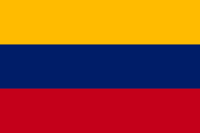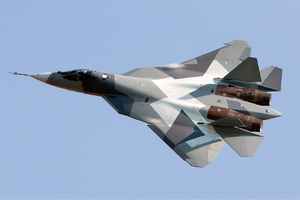Riamo
Riamese Federation | |
|---|---|
|
Flag | |
Motto: "Fuerza, Gloria y Libertad" (unofficial) | |
Anthem: "Riamo ahí estará" ("Riamo will be there") | |
| De facto national language | Spanish Riamese |
| Recognized Regional Languages |
|
| Demonym(s) | Riamese |
| Government | Federal Asymmetric Devolutionary Republic |
• Chancellor | Elisa Nunes |
| Establishment | |
• Colony of New Canteria | 1758 |
• Protectorate of New Canteria | 1801 |
• Dominion of Riamo | 1822 |
• People's Republic of Riamo | 1946 |
• United States of Riamo | 1960 |
| Area | |
• Total | 800,000 km2 (310,000 sq mi) |
| Population | |
• 2020 census | 138,643,589 |
| GDP (nominal) | 2020 estimate |
• Total | 3.29 Trillion ACU |
• Per capita | 23,840.57 ACU |
| Currency | Riamese Pente 1:1 conversion with real Dollar (RP) |
| Time zone | UTC-6 |
| Date format | dd-mm-yyyy |
| Driving side | right |
Riamo, officially the Riamese Federation (Spanish: Federacion de Riamo) is a federal devolutionary nation located mostly in Antariax, with some pockets of territory across the Talsar Sea. Riamese posesions in Olivacia such as the Sefan Exclave, the Seivo exclave, the exclave of Niona, and the Associated Republics make Riamo the only country to hold major expanses of land on both Antariax and Olivacia continents.
With an area of over 800,000 km2, Riamo is the 2nd largest country in size of the Saltstil Pact, as well as being the most humid and the most Southern Antariax country. Most major urban areas, although with some notable exceptions, lay on the western and southern coasts, among which stand out those of Manresa, Portona, Sefa, Estol, and Nashe, the largest metropolitan area of the country, with close to 9 million inhabitants.
Its capital, Guri, is known for excellent public transportation, technological industries, cultural heritage and monuments, and the Guaya river.
Etymology
The etimology of the country is said to come from spanish "Río llano" (plain river), which would soon see itself modified with the heavy creole that appeared in the area by the dawn of the 19th century.
History
Geography
Riamo is well known for its rivers. The Koleno, which traverses along many important cities of Riamo, crosses the country from the northwestern to t and the Mali rivers. Rivers like the Nalsh, and Heinel
Due to its vast valleys and relatively plain topographyt, he Riamese economy is strongly centered around its waterways, the most prominent ones being the Koleno, Segret, Mali and Pucamayo rivers.
Government & Politics
Administration
Riamo is a devolutionary republic that possesses subjects of varying levels of autonomy and responsibilities, all created as an attempt to fulfill the desires of all peoples living within the United Socialist Riamese Republics upon its fall after the November Revolution.
Subjects
See: Subjects of Riamo
There are 6 types of Federal Subjects within Riamo:
- Federal City: Consisting of major metropolis and their surrounding urban areas, the federal cities depend heavily on the federal government for some of its functions while possessing absolute liberties regarding budget administration, planning and some legislation.
- States: Being the most common of all subjects, states rely heavily on the federal government for most of their functions and have a high percentage of Riamese settlers.
- Autonomous Regions: With higher autonomy than states, AR's have slightly higher legislative liberties and the opportunity to have additional official languages.
- Territories: Usually consisting on vast landscapes with very low population, territories depend heavily on the central government while having some unique guarantees regarding recreational and settlement legislation.
- Federal Dependencies: Nominally different from territories, the Federal Dependencies consist of a series of barely inhabited or desolate islands off the riamese coast.
- Republics: Possessing the most autority of all subjects, republics have an own constitution, chief of state, as well as a vast amount of legislative liberties and the possibility to have additional official languages.
- Associated Republics: Currently only one, Freice, the associated republics were a series of countries once independent from the riamese government, but now associated by the Agreement of Association. The main differences between them and every other republic is the ausence of an obbligation to abide by the riamese constitution, as well as the inhability for riamese inhabitants to take part on their electoral processes.
Military
See: Riamese Armed Forces, Riamese Navy
Riamo's military is a noticeable player in the region, fueled mainly by a long legacy of a strong shipbuilding industry and a strong tendency to make alliances with militaristic countries. It is to be noted that Riamo offers citizens the possibility of serving in the army, while getting a salary and an education degree, with the condition of staying in the force for a minimum of 5 continuous years.
Due to the Agreement of Association established with Freice, the Riamo military is in charge of the defense of Freice. This includes having an obbligation to defend the country in terms of internal order and external affairs, as well as against natural disasters and other catastrophes. The agreement also established a shared Exclusive Economic Zone and allows for free movement in the other's waters.
Economy & Population
The Riamese economy has a strong natinalized sector, most of which operates as private companies but under governmental supervision and guidance. This includes heavy machinery, shipbuilding, transportation and resource extraction, among others.
Riamese economy had always been supported mainly by a strong agricultural sector, however, after the Pacific Revolution, the country experienced a massive economic boom lead by legislation towards the protectionism of local enterprises, the overexploitation of high value economical resources, benefitial geopolitical factors, guvernmental interventionism, and internal investments into high-value sectors. By the 1980's, Riamo was in an unprecedented economic boom that lead companies to start exporting goods to the world.
By the 2010's, the most economically effective sectors included those of:
- Manufacture of fabricated goods related with public daily consumption
- Affordable public mobility
- Rural strategic resource production
- Local assets of international enterprises
- Design and construction of fixed transport structures
- Specialized silicon microchip technology
- Manufacture of vessels and equipment dedicated towards the intent of national defense
Riamo is one of the top global producers of iron, peaches, wine, military armament, microchips, cabbage, oranges and ammonia.
Cities
With an urban population of around 55%, Riamo posseses some of the biggest metropolis of the region, some of which date from thousands of years ago.
Prominent Cities
| City | Population | Location | Toponym |
|---|---|---|---|
| Guri | 6.8 M | Guri | Said to derive from Antinese "Guyare" (river) |
| Nashe | 6.2 M | Nashe | Example |
| Portona | 5.8 M | Example | Example |
| Manresa | 5.2 M | Example | Example |
| Sefa | 4.6 M | Example | Example |
| Gomara | 4.5 M | Example | Example |
| Vallona | 4.2 M | Example | Example |
| Arenola | 4 M | Example | Example |
Transport
After the nationalization of land transportation of 1977, subways, airlines, bus companies and shipping companies, all became government-owned. After that year, and during the Mid-century dictatorships, subways and airlines would see a massive increment in their bugdet, with subways adopting the Ferrer System.
Nowadays, many political parties have a possitive view on public transportation, but specially since 2006, when major investments on mass transit systems returned to Riamo, converting the nation into a world leader in the area.
Public Transportation
See: Mass Transportation in Riamo
The Ferrer System was adopted in the early 00s as a response to the low income of public transportation nation-wide. By the System, public transportation companies would purchase land in advance of a major investment in the area. Puchased land would then be used primarily for the construction of facilities provided by the company, such as subway lines and stations, but a large part of the land would be used to construct building that would not only further boost local land value, but aserve as residential and commercial buildings leased by the transportation company to further generate income.
The Ferrer System made income from public transportation skyrocket, but was severely critiziced later due to the supposedly overexploited people living and working in these leased land. The protests, however, were listened to, and the government created a law that would reduce taxes to people living in these areas.
Because of the Ferrer System, Riamo has become the only nation whose all mass transport systems produce revenue instead of requiring funding from the federal government.
From all subway systems in Riamo, the most well known ones are:
- Guri - Capital of Riamo, possesses the largest public transportation network in the continent.
- Nashe - Being the densest city in Riamo, Nashe counts with a vast public transportation system.
- Portona - The olimpic capital of Riamo. Counts with 14 subway lines built in less than 30 years and is in continuous expansion.
Important Companies
- Riamese Railways Company The RRC is known for being the owner of all subway systems in the nation and 3 mainline companies of rail transport. Through the use of the Ferrer system, the RRC has achieved an average return margin of over 102% on all subway systems operated by the company, including 2 systems in Krenya and 3 elsewhere in the world
- Vayle industries - famous for their V22 "vector" and C3-A "arrow" multi-role fighter aircraft
- COPA - manufacturer of RSS Constelation
- Guri Aerospace - manufacturer of RS70 "razor"
- Union de Navieras Barlovento - shipbuilding company in charge of the new Ciudad Class Frigates
Agriculture
Agriculture in Riamo has always been a fundamental pillar of the economy, with peaches, oranges, grapes, cabbage, chetnuts, rice and cherries being the main exports.
Demographics
Although large, the Riamese population has been categorized as one of the overall poorest populations from the eastern hemisphere. With a literacy rate of under 65%, the country has a Poverty headcount ratio at 5.00 ACU of over 25%.
Industrialization in the country came by the early 18th century, lead by the shipbuilding industry and recent colonial independence. With a rapid adoption of the steam locomotive for intranational shipping, most cities soon had their first industrial railyards and central grand stations which, by the dawn of the 20th century, found themselves surrounded by a sprawling spaghetti of railways.
With industrialization came a rivalry between impoverished workers and farmers, and the high-incomed elites of factory owners. This would soon lead to the praising of populist figureheads and a rivalry between rural and urban areas of the country, the former leading on the agricultural and mining sectors, and the latter on the transit and shipbuilding ones.
The Riamese government has made several adjustments to its legal system trying to promote more refined lifestyles, being the most noticeable the approval of mandatory military service, where recruits are forced into literacy, elegancy, respect, loyalty and discipline. Altho critiziced by it, Riamo has seen an increase in literacy of over 7% and an increase on Living Income from 50% to 80% in 10 years.

